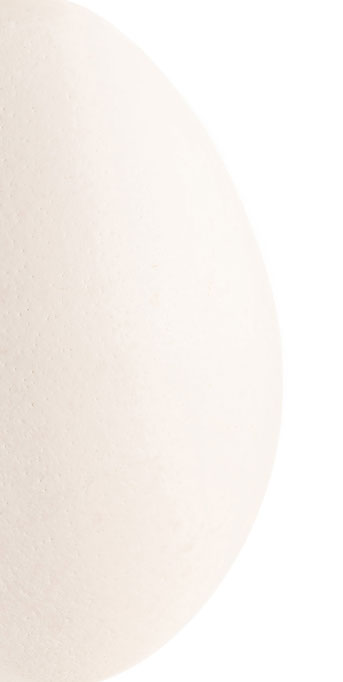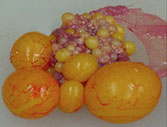
Ulf Skogsberg
Photography
email:

Photography
Photographs printed on Cotton Rag with Pigment inks using contemporary digital printing technology from exacting micro photography at extremely high resolution. The methods are found in technologies of today, bringing together digital capture, astronomy photography focus stacking and panorama stitching software on computers,
This allows to show more in a photographic print than ever before. More details, more tones, more colors...
A website cannot show these qualities - better to see the prints in person.
For more information or to drop me a line with a comment or request;

Egg
"Which came first the chicken or the egg ?"; so the saying goes.
In my case Hope Sandrow came first, my wife, an artist, went for a walk in nearby woods and encountered a white bird. It followed her home and roosted in our tree. We thought perhaps a chicken, but unusual with a crest. This breed now mostly show birds. "Padovano" or "Paduan" named for Padua Italy, where a rooster reigns as the city weapon or "Polish", as the English calls them or "Ciuffata" named by the Dutch.
We allowed the Rooster to stay or to leave... whatever he wishes, give food, water, shelter. he loves being photographed, with no owners found, he is named "Shinnecock" for our area and gets a few female friends - start of a flock that quickly grows - new blood brought in - coops built - veterinary skills learned - egg production - art work - inspiration....
Open Air Studio
Hope Sandrowis my collaborator on these images, her project "Open Air Studio" has been an inspiration in this work featuring feathers, eggs and Paduan Portraits.
Read more about it on Hope Sandrow's website:
http://www.hopesandrow.com/live/ABOUT_open_air_studio.html
Laying
Female birds are born with thousands of microscopic eggs in it's ovary.

The eggs grow in the ovary and with enough daylight hours, one egg per day is released into the oviduct. The egg yolk is fertilized, coated with albumen, then a membrane is added, chemicals to kill bacteria and finally a layer of calcium. The calcium is still somewhat soft as the egg is laid and the pressure of laying the egg forms the slightly thicker part of the egg to become slightly asymmetrical. The purpose is so that the egg rolls in a circle in the nest and doesn't fall out. The process through the oviduct takes 24 hours. One rotation of the Earth.
As the egg is laid, sperm is squeezed out of the sperm host glands, where the hens store the sperm and this sperm migrates up through the oviduct to meet the next egg released from the ovary about an hour after previous egg is laid. This delay in the cycle means that when ovulation would occur too late in the day, the cycle is halted till the next morning. Thus the hen lays clutches of 3-4 eggs and rests one day. She will lay 12 eggs before setting; attempting to hatch the eggs. It is believed that this fact gave rise to the concept of a "dozen". Coincidentally there are 12 Moon cycles during one full rotation of the Earth around the Sun.